Genre: Run-‘N-Gun Developer: M2 Publisher: Sega of Japan Players: 1 Released: 1995
I wasn’t colorblind. I had an IQ over 12. For these reasons, I chose Sega’s Game Gear over Nintendo’s Game Boy when it came time to buy a portable game system. Truth be told, I really didn’t buy it for the games, either; it was the TV adapter which appealed to me at the time. Games? I had my consoles for games. Of course, once I got the thing in my hands, I looked around to see what I could get to play on the thing. There wasn’t a whole lot of the Game Gear library which appealed to me in the early ’90s, more so when stacked against the games I was playing at home.
I was playing Gunstar Heroes at home. Wow! What an awesome game, huh? Mixing and matching four different weapons, blasting an endless wave of enemies, awesome bosses, amazing graphics… It’s a run-‘n-gun masterpiece, and I played it all the time. I’d love to play that on the go, too, even if “the go” is most likely to be the toilet. That was but a pipe dream though, at least until news of a Japanese port was spotted in Die Hard Game Fan some two years after the original game’s release. I guess Sega doesn’t care much for synergy nor cared enough to bring the game overseas. Still, the Game Gear Gunstar Heroes port looked great in the magazine’s screenshots. I had to have it and have it I did. Of course, the Sega Nomad would launch later that year, but in that brief window from March ’95 to October ’95, the Game Gear could lay claim to the best portable Gunstar Heroes experience all to itself.
Cramming Gunstar Heroes, one of the more impressive Genesis games around, into the 8-bit portable is no easy feat, but developer M2 did a pretty good job of it. The intro is all there, both of them, and the game largely looks and plays similarly. We still get to choose from any of four different weapon types with the ability to combine two of them for enhanced effects before heading off, and the game still allows you to select from either free and fixed shot control methods. I’m still jump kicking mobs, chucking guys every which way, and blocking enemy shots with my defensive move. OK, maybe not so much that last one, but it’s here all the same.
What’s not here? My favorite level, Black’s Dice Maze. Good bye, Mellon Bread; I hardly knew ye. The entire level and board game are scrapped along with the shoot-’em-up stage featuring the return of Timeron and Golden Silver. Beyond these two glaring omissions – leaving the two most original levels of the game on the cutting room floor stinks – everything else is in the game, albeit with some concessions and tweaks here and there. The assault on the base after saving Yellow is changed, putting the player in a giant walking mech which pretty much bulldozes everything in its path. M2 puts you in a helicopter backpack device instead of a mine cart in the abbreviated Green’s stage, and only the Unit of the Runner returns for the Core Guard System fight. Fans will notice many bosses including the game’s crowning jewel, the transforming Golden Silver, have missing or altered attack patterns as well.
I can’t say these changes are for the better, but to their credit, the port still retains the 16-bit game’s pacing and excitement. Gunstar Heroes is known for throwing a ton of stuff on screen, and the Game Gear version keeps up quite well. There are quite a few sprites, explosions, and effects tossed on the small screen, and while flicker is abundant, that they’re even present on this tiny 8-bit machine is no small miracle. Papaya Dance, the bomb spouting plant, still thrashes to-and-fro when shot, and Bravoo Man still struts about his platform showing off his impressive 3D cube structure. Orange’s helicopter doesn’t sway about anymore, but we still get a good bit of parallax scrolling on his stage and elsewhere. The Unit of the Runner, the giant humanoid defense system, still runs around the screen in a dizzying display of special effects which I didn’t think the system was capable. It really has to be seen to be believed, because I can’t think of many other 8-bit titles which look as amazing as Gunstar Heroes.
How did M2 do it? I’m guessing the developer sacrificed the Game Gear’s sound chip to a lesser god, because the audio is rather grating on the ears. The 16-bit soundtrack eschews melody in favor of a more bombastic score, and it just doesn’t work on the Game Gear. Themes such as what is played while climbing Orange’s tower are more blips and bleeps than recognizable, enjoyable music. The mix is bad, too, with stuff such as the constant blumrn-blumrn of the grenades Smash Daisaku rains down on you drowning out the music. There’s really just too much going on here for the SN76489A chip to handle.
If you ignore the audio, you’re still left with a surprisingly capable Gunstar Heroes port. It’s too bad Sega and M2 couldn’t get it out a couple of years sooner when it could have really helped “separate the men from the boys.” The problem with the game is that its time was up with the debut of the Nomad. Why limit yourself with a watered down (albeit impressive) version of Gunstar Heroes when you can play the original? The cramped display changes some dynamics – weapon combinations lose some of their individuality when even the short-range stuff covers most of the screen – and it’s difficult to accept Golden Silver into your heart when he’s looking so malnourished compared to his 16-bit brother.
I love Gunstar Heroes. It’s not only my favorite Genesis game, but it’s also my favorite game, period. The Game Gear port still serves as an example of what the portable system is capable of and a good game unto itself, but having played through it a few times now, I’m hard pressed for a reason to go back. We’re not in 1995 anymore, and losing two-player support, axing a couple of levels, and neutering some of the bosses and levels is a bit more difficult to accept with the Genesis original in reach. The few changes here may be worth a look for fans, but I don’t think any of them justify the relatively high price of admission, nor do they supersede the original.
SCORE: 8 out of 10

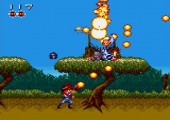
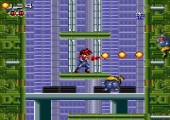
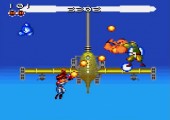
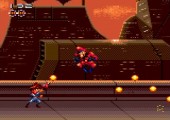
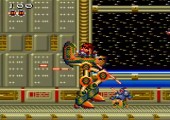
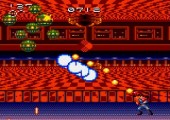
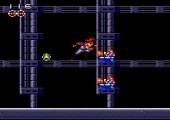
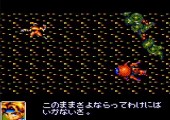
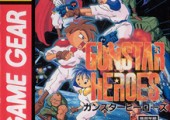
Recent Comments